Issue 15 (27). Vol 1
DOI: 10.33098/2078-6670.2023.15.27.1.228-238 Akhtyrska N. Council of Europe standards on the use of facial recognition technologies in criminal proceedings or who is the eye of Sauron looking at
Akhtyrska N. Council of Europe standards on the use of facial recognition technologies in criminal proceedings or who is the eye of Sauron looking at
Purpose. The purpose of this article is to analyze the current approaches of the Council of Europe regarding the regulatory regulation of the use of facial recognition technology in criminal proceedings, taking into account the wide spread of this method of fighting crime. The methodology includes the analysis of the Council of Europe Instructions on facial recognition dated January 28, 2021 and the Recommendations of the Council of Europe dated November 18, 2022, the study of the experience of other countries, the assessment of the risks of implementing this technology, the available scientific and theoretical material, and the formulation of relevant conclusions and recommendations. The following methods of scientific knowledge were used during the research: terminological, logical-semantic, functional, systemic-structural, logical-normative. The results. The result of the study was the determination of the main principles of the implementation of the national facial recognition system, which is definitely extremely necessary and effective in the activities of law enforcement agencies and the defense sector. In order to ensure a balance between the observance of human rights and the security of society and the state, this system must be based on legality, transparency, temporal criteria (determining the time of image storage), prohibition of discrimination (tracking based on national, religious and other criteria), audit and ethics. Practical significance. The conducted analysis of modern international standards and recommendations can be useful in the development of draft laws on the introduction of facial recognition technologies (amendments to the Criminal Procedure Code of Ukraine regarding the granting of permission to deploy a facial recognition system in a certain place with a certain purpose and the adoption of a special law on regulating the activities of a special national body responsible for the functioning of this system) to prevent human rights violations. The lack of ECtHR practice on this issue (one application was submitted for consideration) requires careful legislative elaboration of the introduction of new technologies.
Key words: identification, face recognition technology, discrimination, tracking, surveillance, transparency of the use of innovative systems.
References
- Universal Declaration of Human Rights. Initiated and promulgated by resolution 217 A (III) of the UN General Assembly of December 10, 1948]. Holos Ukrainy.10.12.2008 — No 236. (in Ukrainian)
- About the Unified State Demographic Register and documents confirming the citizenship of Ukraine, certifying an individual or other special status: Law of Ukraine № 5492-VI. 20.11.2012. Retrieved from:https://zakon.rada.gov.ua/laws/show/5492-17 (in Ukrainian).
- On electronic trust services: Law of Ukraine № 2155-VIII dated October 5, 2017. Holos Ukrainy vid 07.11.2017 — No 206. (in Ukrainian)
- On amending some legislative acts of Ukraine to ensure the conclusion of an agreement between Ukraine and the European Union on the mutual recognition of qualified electronic trust services and the implementation of European Union legislation in the field of electronic identification: Law of Ukraine No. 2801-IX dated 01.12.2022. Voice of Ukraine dated December 31, 2022 — No. 267. (in Ukrainian)
5. Akhtyrska, N. (2022). Oderzhannia dokaziv v elektronnii formi v svitli Druhoho dodatkovoho protokolu do Konventsii pro kiberzlochynnist [Receipt of evidence in electronic form in light of the Second Additional Protocol to the Convention on Cybercriminals]. Kryminalistyka i sudova ekspertyza, 67. DOI: https://doi.org/10.33994/kndise.2022.67.21 (accessed 02 January 2022). (in Ukrainian)
6. Na Kyivshchyni vstanovliat kamery videosposterezhennia z rozpiznavanniam oblych [A video surveillance camera with face recognition was installed in Kyvshchyna]. Retrieved from: https://enovosty.com/news/news_kiev/full/0501-na-kievshhine-ustanovyat-kamery-videonablyudeniya-s-raspoznavaniem-lic. (accessed 05 January 2023). (in Ukrainian)
7. Prokopenko A., M. Altenhenne. Großbritannien verwendet zunehmend Gesichtserkennungssysteme [The UK is increasingly using facial recognition systems]. Retrieved from: https://www.dw.com/ru/%D0%B2-%D0%B2%D0%B5%D0%BB%D0%B8%D0%BA%D0%BE%D0%B1%D1%80%D0%B8%D1%82%D0%B0%D0%BD%D0%B8%D0%B8%D0%B2%D1%81%D0%B5%D1%81%D0%BB%D0%BE%D0%B6%D0%BD%D0%B5%D0%B5%D0%B8%D0%B7%D0%B1%D0%B5%D0%B6%D0%B0%D1%82%D1%8C-%D0%BA%D0%B0%D0%BC%D0%B5%D1%80%D1%81%D0%BB%D0%B5%D0%B6%D0%B5%D0%BD%D0%B8%D1%8F%D1%81%D1%80%D0%B0%D1%81%D0%BF%D0%BE%D0%B7%D0%BD%D0%B0%D0%B2%D0%B0%D0%BD%D0%B8%D0%B5%D0%BC%D0%BB%D0%B8%D1%8625102019/video-50993789 (accessed 06 January 2023). ( in German)
8. In Berlin werden Gesichtserkennungskameras getestet [Face recognition cameras are being tested in Berlin]. Retrieved from: https://www.dw.com/ru/%D0%B1%D0%BE%D1%80%D1%8C%D0%B1%D0%B0%D1%81%D0%BF%D1%80%D0%B5%D1%81%D1%82%D1%83%D0%BF%D0%BD%D0%BE%D1%81%D1%82%D1%8C%D1%8E%D0%B8%D0%BB%D0%B8%D1%82%D0%BE%D1%82%D0%B0%D0%BB%D1%8C%D0%BD%D0%B0%D1%8F-%D1%81%D0%BB%D0%B5%D0%B6%D0%BA%D0%B0-%D0%B2-%D0%B1%D0%B5%D1%80%D0%BB%D0%B8%D0%BD%D0%B5-%D1%82%D0%B5%D1%81%D1%82%D0%B8%D1%80%D1%83%D1%8E%D1%82-%D1%81%D0%B8%D1%81%D1%82%D0%B5%D0%BC%D1%83-%D1%80%D0%B0%D1%81%D0%BF%D0%BE%D0%B7%D0%BD%D0%B0%D0%B2%D0%B0%D0%BD%D0%B8%D1%8F%D0%BB%D0%B8%D1%86%D0%B0-25082017/video-40237659 (accessed 06 January 2023). (in German)
9. Consultative Committee of the Convention for the Protection of individuals with Regard to automatic Processing of Personal Data Convention 108. Guidelines on Facial Recognition 28 January 2021 T-PD (2020) 03rev4. Directorate General of Human Rights and Rule of Law. Retrieved from: https://rm.coe.int/guidelines-on-facial-recognition/1680a134f3 (accessed 06 January 2023). (in English)
10.Consultative Committee of the Convention for the Protection of individuals with Regard to automatic Processing of Personal Data Convention 108. Guidelines on National Digital Identity.18 November 2022 T-PD (2021) 2rev9. Directorate General of Human Rights and Rule of Law. Retrieved from:: https://rm.coe.int/t-pd-2021-2rev9-guidelines-digital-identity-2761-5846-6310-2/1680a95e1e (accessed 06 January 2023). (in English)
11.Convention 108 +. Convention for the protection of individuals with regard to the processing of personal data. Council of Europe, June 2018. Printed at the Council of Europe. Retrieved from:: https://rm.coe.int/convention-108-convention-for-the-protection-of-individuals-with-regar/16808b36f1(accessed 06 January 2023). (in English)
12. Mischtschenko, O. Beim EGMR wurde eine Klage gegen ein Gesichtserkennungssystem in Moskau eingereicht. [A lawsuit against a facial recognition system in Moscow has been filed with the ECtHR]. Retrieved from: https://www.dw.com/ru/%D0%B2%D0%B5%D1%81%D0%BF%D1%87%D0%BF%D0%BE%D0%B4%D0%B0%D0%BD%D0%B0%D0%B6%D0%B0%D0%BB%D0%BE%D0%B1%D0%B0%D0%BD%D0%B0%D1%81%D0%B8%D1%81%D1%82%D0%B5%D0%BC%D1%83%D1%80%D0%B0%D1%81%D0%BF%D0%BE%D0%B7%D0%BD%D0%B0%D0%B2%D0%B0%D0%BD%D0%B8%D1%8F%D0%BB%D0%B8%D1%86%D0%B2%D0%BC%D0%BE%D1%81%D0%BA%D0%B2%D0%B5/a-54067454 (accessed 06 January 2023). (in German)



